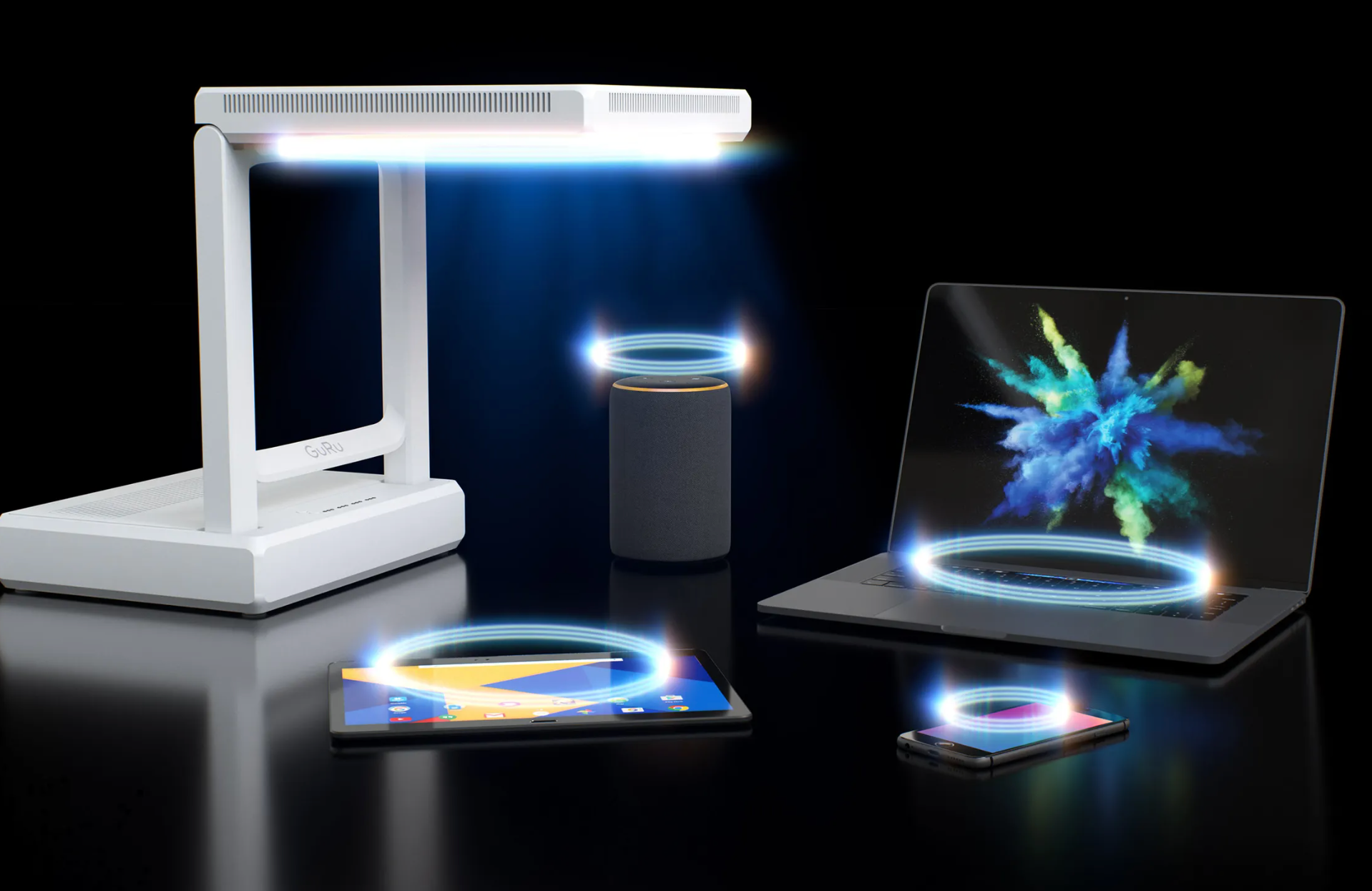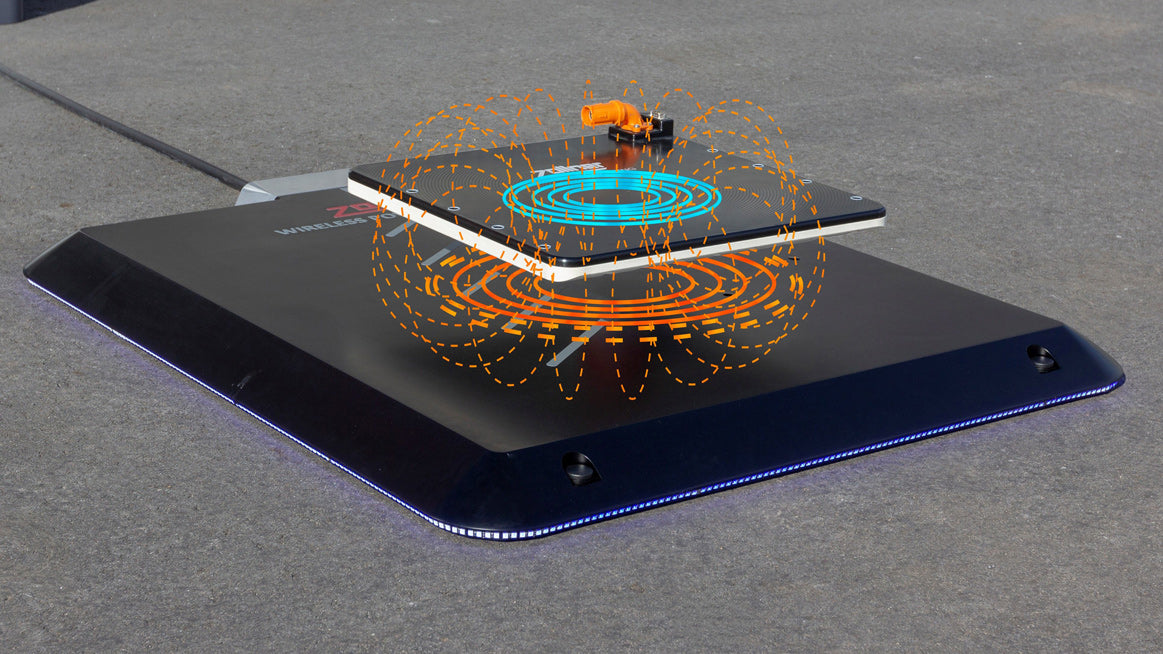By: Hrishikesh Kadam, Research Content Developer at Global Market Insights (GMI)
The world is rapidly going wireless. Within a span of a few decades, phones and internet became wireless, and now charging has become wireless. Even though wireless charging is still pretty much in its early stages, the technology is anticipated to evolve dramatically over the next few years.
The technology has now found its way into a wide array of practical applications ranging from smartphones and laptops to wearables, kitchen appliances, and even electric vehicles. There are several wireless charging technologies in use today, all aimed at cutting cables.
Automotive, healthcare, and manufacturing industries are increasingly embracing the technology as wireless charging promises improved mobility and advances that could enable Internet of Things (IoT) devices to be powered from a distance.
The global wireless charging market size is estimated to be worth more than $30 billion by 2026. It offers ultimate convenience to users and ensures safe charging in hazardous environments where an electrical spark could lead to an explosion.
How does it work?
Wireless charging is based on the principle of magnetic resonance (MR), or inductive power transfer (IPT). Energy is transferred from the charger via electromagnetic induction to a receiver placed at the back of the device. The charger generates an alternating electromagnetic field using an induction coil, which the receiver coil converts back into electricity. Described below are a few wireless charging methods.
- Radio Charging: The method is generally preferred to power devices that have small batteries and consume very little power such as smartphones, wireless mice, wireless keyboards, medical devices, smartwatches, music players, and many more. The receiver in the device is configured to the same frequency as the transmitter, which allows the device to charge via radio waves.
- Inductive Charging: The method is widely used to charge medium-sized devices including smartphones, tablets, music players, and kitchen appliances. In inductive charging, the device needs to be placed on a wireless or conductive charging pad which is then plugged into an electrical outlet.
- Resonance Charging: Resonant wireless chargers are used for devices that consume a substantial amount of power such as computers, electric cars, vacuum cleaners, or robots. In resonance charging, the copper coil in the device is tuned to the same electromagnetic frequency as the coil in the power source.
Need for Thermal Management in Wireless Charging
Wireless charging is undeniably faster, easier, and more convenient. However, devices can go undergo dramatic temperature fluctuation during wireless charging, resulting into poor performance and a reduce battery life cycle. Thermal properties are seen as a secondary design consideration by a majority of developers. Owing to the robust demand for wireless charging, device manufacturers tend to overlook seemingly minor considerations to get their products to market faster.
Robust advances have been made in EV batteries that allow them to deliver more power and require less frequent charges. However, the ability to design an effective cooling system remains one of the biggest challenges to ensure battery safety and optimum efficiency. Electric cars use large batteries to store energy.
Larger the battery size, higher will be the rate of current flow and heat generation. Following are the commonly used battery thermal management methods used.
- Phase Change Materials (PCM): Phase change materials absorb heat by changing from solid to liquid state. With just a minute change in temperature, these materials can absorb large amounts of heat. However, volume change that occurs during the process restricts their application.
- Fin Cooling: Cooling fins increase the surface, which increases the rate of heat transfer. These fins typically have a high thermal conductivity and can efficiently achieve cooling. However, they add a lot additional weight to the system.
- Air Cooling: Air cooling uses the principle of air convection to absorb heat from the battery pack. The air that runs over the surface carries away the heat dissipated by the system. The method is simple and easy, but less efficient compared to liquid cooling.
- Liquid Cooling: Liquid coolants have higher heat capacity and heat conductivity compared to air, due to which the system performs more efficiently. In addition, liquid cooling systems are compact and tend to deliver the best performance for maintaining the required temperature.
Standard Wireless Charging Technologies
The Wireless Power Consortium (WPC) and the Power Matters Alliance (PMA) are the two most common prevailing wireless charging technologies in the market. Both WPC and PMA are similar technologies and work on the same principle but differ on the basis of the frequency of operation and connection protocols used.
The WPC Charging Standard is an open membership organization that maintains different wireless charging standards, including the Qi Standard, the most common standard in use today. Smartphone giants including Apple, Samsung, Nokia, and HTC have implemented the standard into their tech.
Devices charged through the Qi standard require a physical connection with the source. The technology currently enables wireless power transfer of up to 5 W with an operating frequency of 100-200 kHz over a distance of up to 5 mm. Ongoing developments will enable the technology to deliver up to 15 W, and subsequently 120 W over much larger distances.
The PMA technology works on the same principle of electromagnetic induction but operates at twice the frequency used by the Qi standard. In its early stages, the technology allowed a power transfer of 3.5 W and 6.5 W, which has recently been extended to 50 W. Both the WPC and PMA standards work on inductive and resonant wireless charging technologies.
Wireless Electric Vehicle Charging (WEVC)
The future of urban mobility is electric, autonomous, connected, and wireless. With fleets of electric and hybrid vehicles hitting the streets in major towns and cities worldwide, the industry is working on the next big thing in electric mobility—wireless electric vehicle charging. The development of wireless charging systems for vehicles has garnered significant momentum in recent years. Integrating the tech into electric cars and strategic installation of charging pads around cities as well as at owner’s homes could eliminate the need to plug in vehicles for charging to some extent.
In January this year, the U.K. Transport Secretary announced plans to invest £3.4 million in trials for wireless charging of electric taxis in Nottingham. Following this announcement, the country is poised to see a revolution in electric mobility. Wireless charging of taxis will serve as an effective alternative to plugs and charging points. The technology could even allow multiple taxis to recharge simultaneously, allowing drivers to charge up more easily and more conveniently. It could also minimize clutter on the streets.
With the growing impact of fuel-driven vehicles on the environment, electric taxi fleets in congested urban streets is critical in cutting transport emissions and cleaning up the air. With more people opting for electric mobility, the new technology can also be rolled out broadly for public use. This in turn would help everyday drivers of electric cars more charge more conveniently on the go. However, the time taken to charge wirelessly could reduce a taxi driver’s earning potential, a problem which is known and being worked upon.
Future trends in wireless charging are anticipated to be based around dynamic electric vehicle charging (DEVC), which allows vehicles to get charged while in motion. The technology could drastically improve the travelling range for electric cars as the EV battery can be charged while driving on roads and highways. In addition, DEVC eliminates the need for large energy storage, making vehicles more lightweight and compact.
Charging of Implantable Medical Devices
Wireless charging of medical devices has the potential to take the application of these devices to a whole new level, pacing the way for a bright and promising future for the healthcare sector. The industry has been continuously experimenting with the technology, exploring the scope of the technology in smart wearables and other medical devices. It could streamline the sterilization and charging process for different handheld, portable, and cart-based medical products.
Numerous cardiac devices such as pacemakers make use of implanted battery packs, while others like cardiac assist pumps use wires to power the device. In 2018, a team of researchers from Massachusetts Institute of Technology (MIT) developed a system called In Vivo Networking (IVN) that allows medical devices implanted inside the body to operate while getting power from radio waves externally.
The functionality of implantable devices is limited by the amount of power supplied to it. The IVN system is an evolution of wireless charging technology called mid-field coupling. Various researchers and scientists have been experimenting with the technology to transfer power and data via radio waves to medical devices. However, all applications thus far have required an external receiver to transmit power to the implanted device.
The test device built by the MIT team is about the size of a grain of rice. However, the team suggested it could be made even more compact. This paves the way for development like more powerful implantable devices and microscopic embedded sensors. Doctors could probably implant such hardware into patients to monitor blood sugar levels and other critical biochemical parameters.
Future Trends
Wireless charging promises to expand the range and increase mobility for IoT device users. The first-generation of wireless chargers only allowed for a distance of a few centimeters between the device and the charger. For new chargers, the distance has increased to about 10 centimeters. As the technology continues to advance rapidly, it could soon be possible to transmit power through the air across distances of several meters.
The business and commercial sector also continues to introduce new and innovative applications for wireless chargers. Restaurant tables that charge smartphones and other smart devices, office furniture with integrated charging capabilities, and kitchen counters that power the coffee machine and other appliances wirelessly are some of the potential applications of the technology





Leave a comment
This site is protected by hCaptcha and the hCaptcha Privacy Policy and Terms of Service apply.